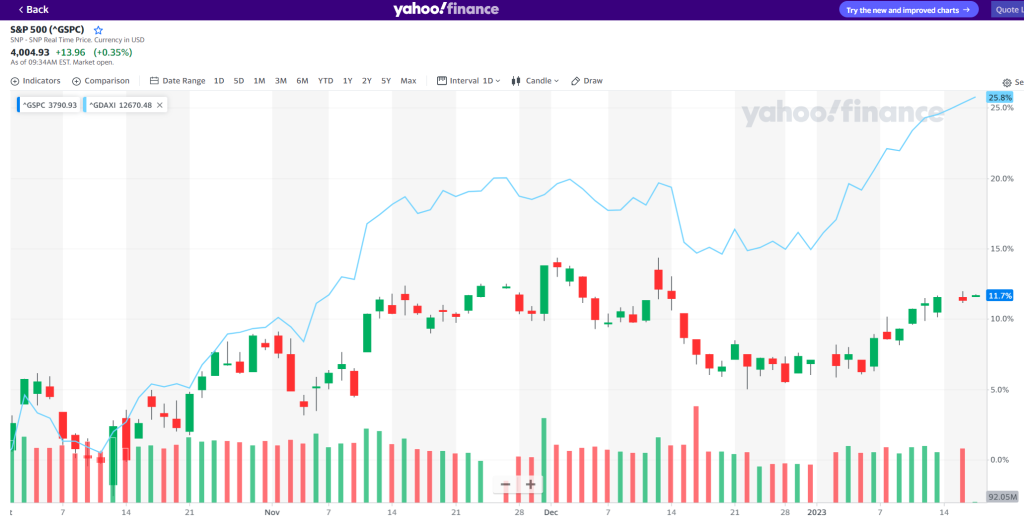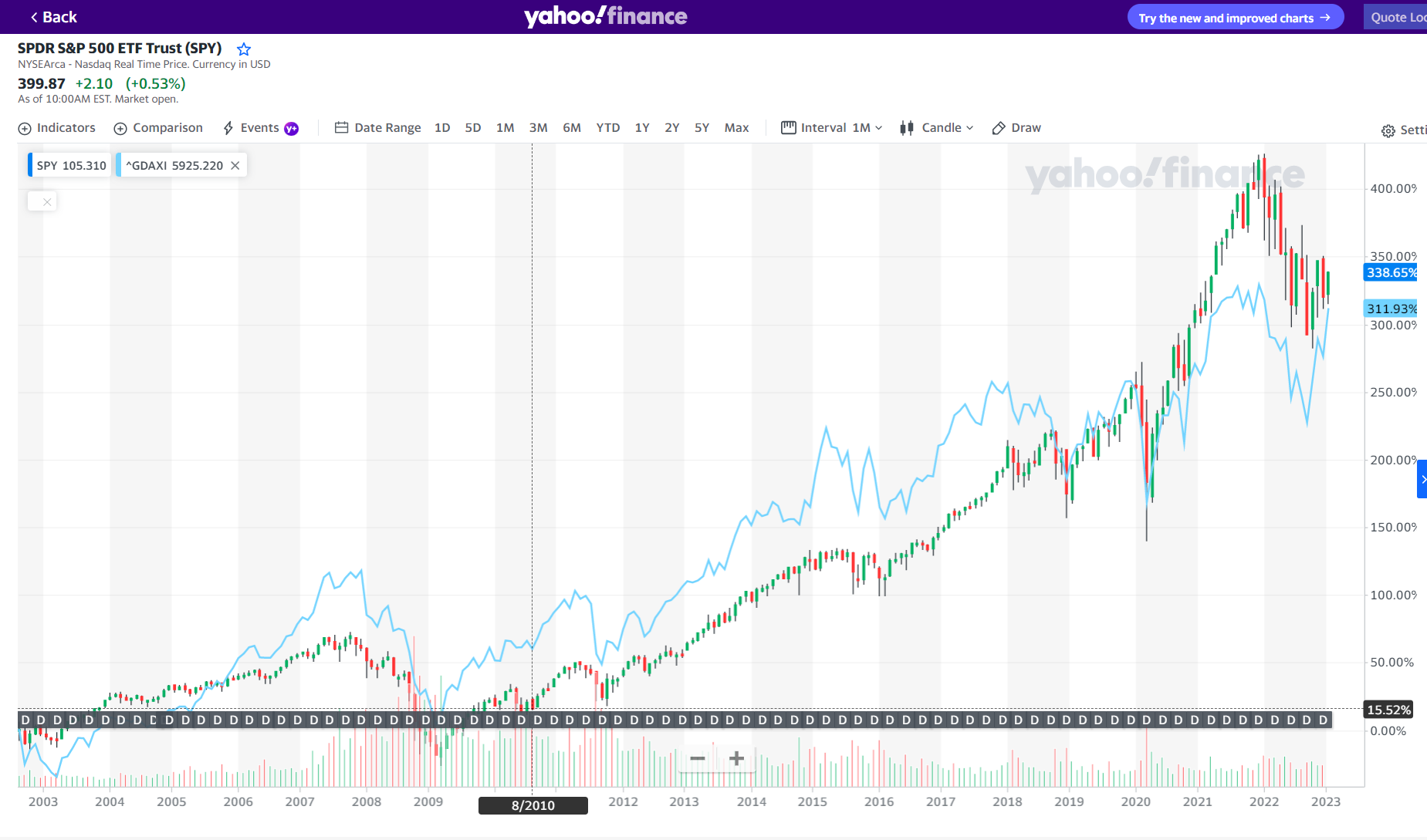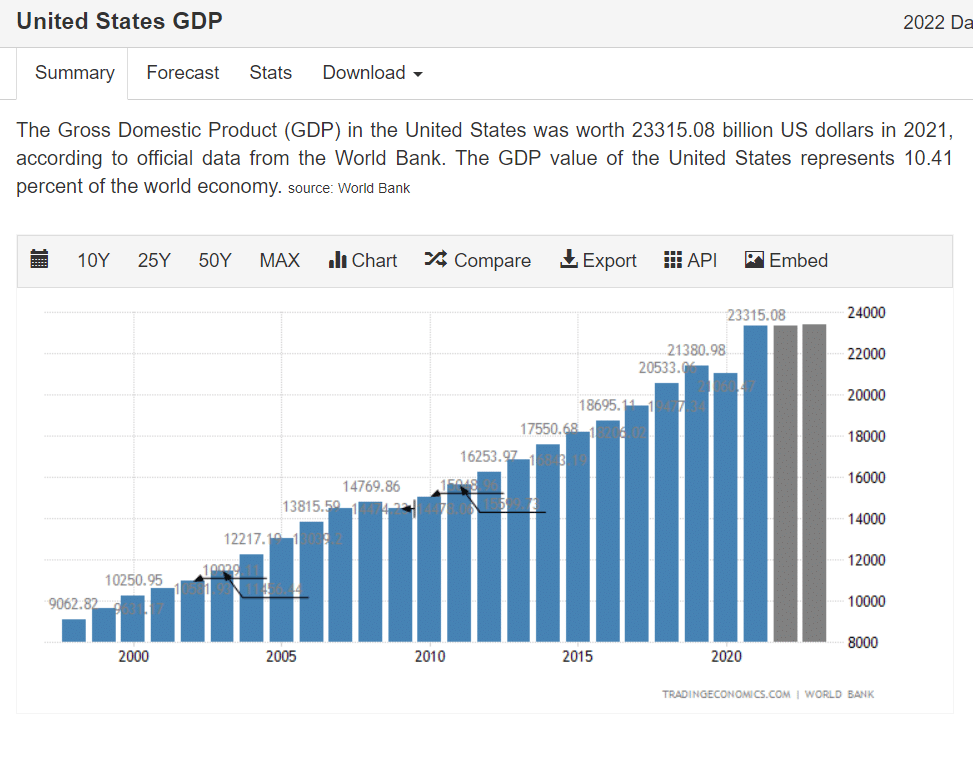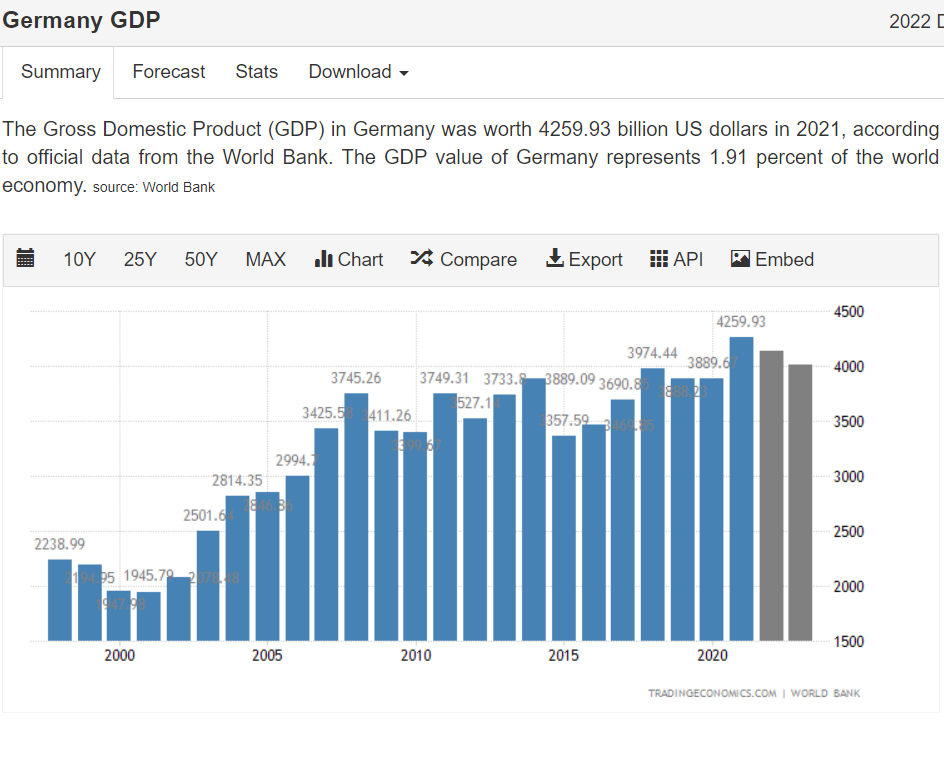DAX vs. S&P500? Choose the Best Match for Your Portfolio


Did you know that the German Index DAX is up 25% since its lows in early October 2022? These were lows of 12 000 compared with the current level in January of 15 000? The S&P500 is only up 11%, so what has it done in that period?
Please see the graph below:
What are the implications of this outperformance in the DAX for investors’ expectations? You might be surprised how fashionable it is to be long on European equities. Indeed, the ‘prevailing wisdom’ is that this outperformance might continue…
Not so fast, we say. Let’s extend our horizon:
As we can see, over the 20-year horizon S&P500 has increased by 338%, while the DAX has increased by 311%. Even more impressive is that DAX is a performance index (it includes dividends), while S&P500 is an investable index without dividends! So, if we ‘adjust’ S&P500 to include dividends, we need to add about 35% more to the S&P500 performance (1.57% average dividend yield for 20 years). By doing that, we get a 373% gain for S&P500 vs. 311% for DAX.
The initial date in 2002 was chosen deliberately: EUR/USD for that period was around parity (1 EUR=1 USD). Therefore, the 20-year numbers presented here do not require adjustment for F.X. changes (at least not much).
However, the markets tell only one side of the story. How has the GDP of Germany changed relative to that of the U.S. over the period?
US GDP in 2002 was 10.9 Trillion USD. At the end of 2022, it was estimated at 25.3 Trillion USD. That was an increase of 145% over 20 years. How has Germany done in that period? Let’s take a look:
Germany’s GDP in 2002 was 2.08 trillion USD. At the end of 2022 it was estimated at 4.06 Trillion USD. That represents a growth of 95% over the period.
This is only part of the story! Let’s compare GDP per capita:
In 2002, US GDP per capita was 38,000 USD, while in 2022 it was 78,400 USD, representing a growth of 101%. In 2002, German per capita GDP was 25,200, while in 2022, it was 49,400. These numbers represent a growth of 96%.
So we see NO evidence that the German economy or stock market, in particular, has done better than the U.S. On the contrary, the U.S. economy and the U.S. stock market have outperformed the German economy and markets! What’s more — we can see clear evidence that U.S. stock market returns are superior to Germany, and the same can be said of the U.S. economy! Yes, we recognize that the DAX has performed better in the last three months, but we don’t think that has any lasting power.
In conclusion: the U.S. economy and its representative index, S&P500, are a better fit for your asset allocation. Europe might show better short-term results, but in the long run, there is clear statistical evidence that America outperforms.
Sources:
Get the trading edge you need in today’s markets – sign up for our monthly newsletter featuring in-depth expert analysis, hot market insights, and exclusive trading strategies.
Disclaimer:





